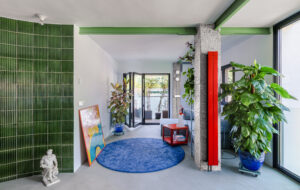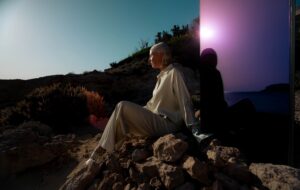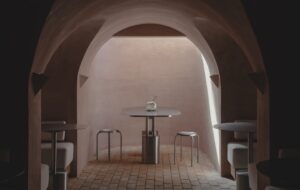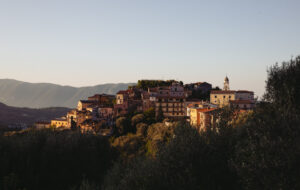|
|
||
|
It is now over four decades since a human being left the orbit of the Earth and visited another world. Viewed from today, the Apollo Moon missions mark a sad limit to the ambitions of humanity, a promise left unfulfilled from an era largely defined by the tension between the stunning achievements of the space race and the interlinked sense of imminent nuclear annihilation – the best hopes and worst fears of technology. Humans may not have settled permanently away from the Earth yet, but in the meantime we have been setting ourselves up in environments almost as remote and extreme, none more so than the permanent research stations of the Antarctic. Thousands of kilometres from any other settlements, subject to the most adverse climatic conditions, and completely incapable of supporting survival without supplies, these buildings are, to all intents and purposes, space stations situated right here on Earth. There are a number of reasons why Ice Lab: New Architecture and Science in Antarctica, a British Council-commissioned exhibition at the Lighthouse in Glasgow, is pertinent. A number of exciting Antarctic research projects have recently been built or are under construction, and the show allows us to see and compare these remarkable structures. But there is also a wider point: with the world’s attention increasingly focused on the rapidly altering climate, there is a sense that the polar regions are the archetypal frontier environment of our age, in a similar way to how outer space was viewed half a century ago. The projects collected show remarkable variety, both in form and approach. Belgium’s Princess Elisabeth station is built from thick glue-laminated timber panels, giving it the air of a flying saucer as designed by John Lautner, and it is the first Antarctic research station to be entirely neutral in terms of carbon emissions. Elsewhere, South Korea is building the larger Jang Bogo station, a spoked arrangement of wedge-like forms defined by the massive wind loads that will buffet the building. Despite the extreme functional requirements, the South Korean station manages to present features such as rather fashionable triangulated window mullions. India’s station, the Bharati research centre, has an almost completely different approach. Low-slung and wide, it has the appearance of one of the more snazzy houses that one might see on the latest design blogs, with a surprisingly large expanse of glazing across the facade. Ingeniously however, the interior is mostly formed from shipping containers, wrapped in a high-performance external skin. These first three stations are perhaps surprising in that, despite the extremity of their location, they present design languages that are recognisably contemporary. Britain’s Halley VI research centre, on the other hand – easily the star of the show – looks like nothing that has ever been built. Designed by Hugh Broughton Architects and Faber Maunsell, its series of segmented hexagonal pods, docked together in a chain, appears strangely like a brightly coloured version of the spaceship Discovery from 2001: A Space Odyssey. As its name suggests, Halley VI is the latest in a series of research stations that the UK has built on the Brunt Ice Shelf over the last six decades. Beginning with Halley I’s simple timber huts, the station has gone through various iterations up to Halley V – which looked like a cross between a site hut and an oil platform. Each one of these stations has been overcome by the environment, whether buried by endless snowdrifts or carried right off the edge of the ice shelf. One unique aspect of Halley VI is the fact that, to overcome the constant motion of its setting, it can be intermittently towed on skis further inland; and it is this mobility that allows the exhibition to make an explicit parallel with Ron Herron’s Walking City project for Archigram (1964). The visual similarity may be tenuous but it is there, and it makes a satisfying connection back to the out-there designs of the 1960s, themselves so influenced by the space race. A couple of superfluities detract from what is already a small exhibition, but on the whole Ice Lab is a satisfying glimpse into the lives of our contemporary space colonists. Ice Lab: New Architecture and Science in Antarctica, 26 July to 2 October, The Lighthouse, Glasgow, then 21 October to 6 January 2014, Museum of Science and Industry, Manchester. |
Image NCAOR (National Centre for Antarctic and Ocean Research)
Words Douglas Murphy |
|
|
||


















